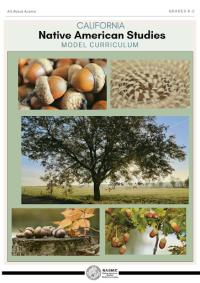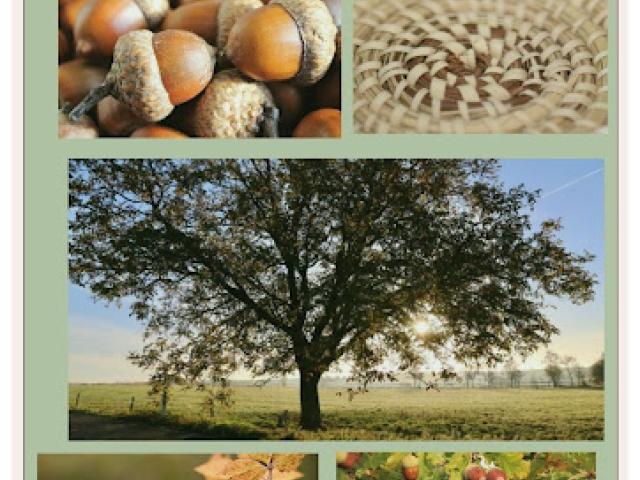Unit Summary
This interdisciplinary unit invites students to explore the acorn—a small seed with enormous ecological and cultural importance. Through hands-on experiences, storytelling, video content, and creative expression, students will develop an understanding of the life cycle of acorns and oak trees, their role as a keystone species, and the vital ways Native American communities have used, respected, and protected oak trees and acorns for generations. Drawing from Indigenous perspectives and knowledge systems, students will engage in place-based and inquiry-based learning that nurtures curiosity, empathy, and a sense of responsibility for the natural world.
Unit Lesson Overviews
Lesson 1: All About Acorns
Students are introduced to acorns through sensory exploration, storytelling, and creative activities. They learn to identify parts of the acorn (cap, shell, seed), understand its life cycle, and recognize its role in the ecosystem. Students engage in labeling, drawing, and crafting to reinforce their learning while also connecting to Indigenous perspectives on nature.
Lesson 2: Learning About Acorns with Molly of Denali
Using a PBS KIDS Molly of Denali video, this lesson highlights the cultural and ecological importance of acorns through an Indigenous lens. Students watch a video, discuss key themes, and explore how traditional knowledge helps people care for the land. They make personal connections through observation, storytelling, and drawing activities.
Lesson 1: All About Acorns
Students are introduced to acorns through sensory exploration, storytelling, and creative activities. They learn to identify parts of the acorn (cap, shell, seed), understand its life cycle, and recognize its role in the ecosystem. Students engage in labeling, drawing, and crafting to reinforce their learning while also connecting to Indigenous perspectives on nature.
Lesson 2: Learning About Acorns with Molly of Denali
Using a PBS KIDS Molly of Denali video, this lesson highlights the cultural and ecological importance of acorns through an Indigenous lens. Students watch a video, discuss key themes, and explore how traditional knowledge helps people care for the land. They make personal connections through observation, storytelling, and drawing activities.
Lesson 3: Native Americans and Acorns
This lesson focuses on how California Native American communities traditionally harvested, processed, and respected acorns as a staple food. Students examine real acorns, engage in simulated grinding activities, and explore sustainability through the concept of taking only what is needed. They reflect through art and writing on the cultural importance of oak trees.
Lesson 4: How to Identify an Oak Tree and Acorn
Students develop vocabulary and observation skills to identify oak trees and acorn anatomy. Through labeling activities and hands-on exploration, they learn to name tree and seed parts while understanding how Native Americans used oak trees and their products. Students use teamwork and visual prompts to deepen their learning.
Lesson 5: Who Benefits from Oak Trees' Gifts and How to Be a Steward
Students explore the concept of the oak tree as a keystone species and learn who benefits from its gifts—humans and wildlife alike. They are introduced to Indigenous stewardship, including controlled burning as a traditional practice to support oak habitats. Students engage in discussion, categorization activities, and create artwork or writing to define their role as stewards of the land.
Learn more...

